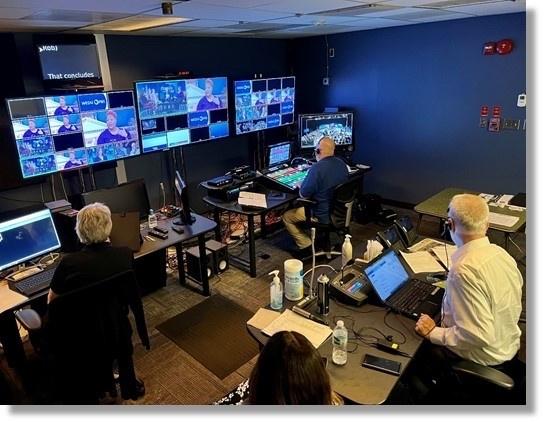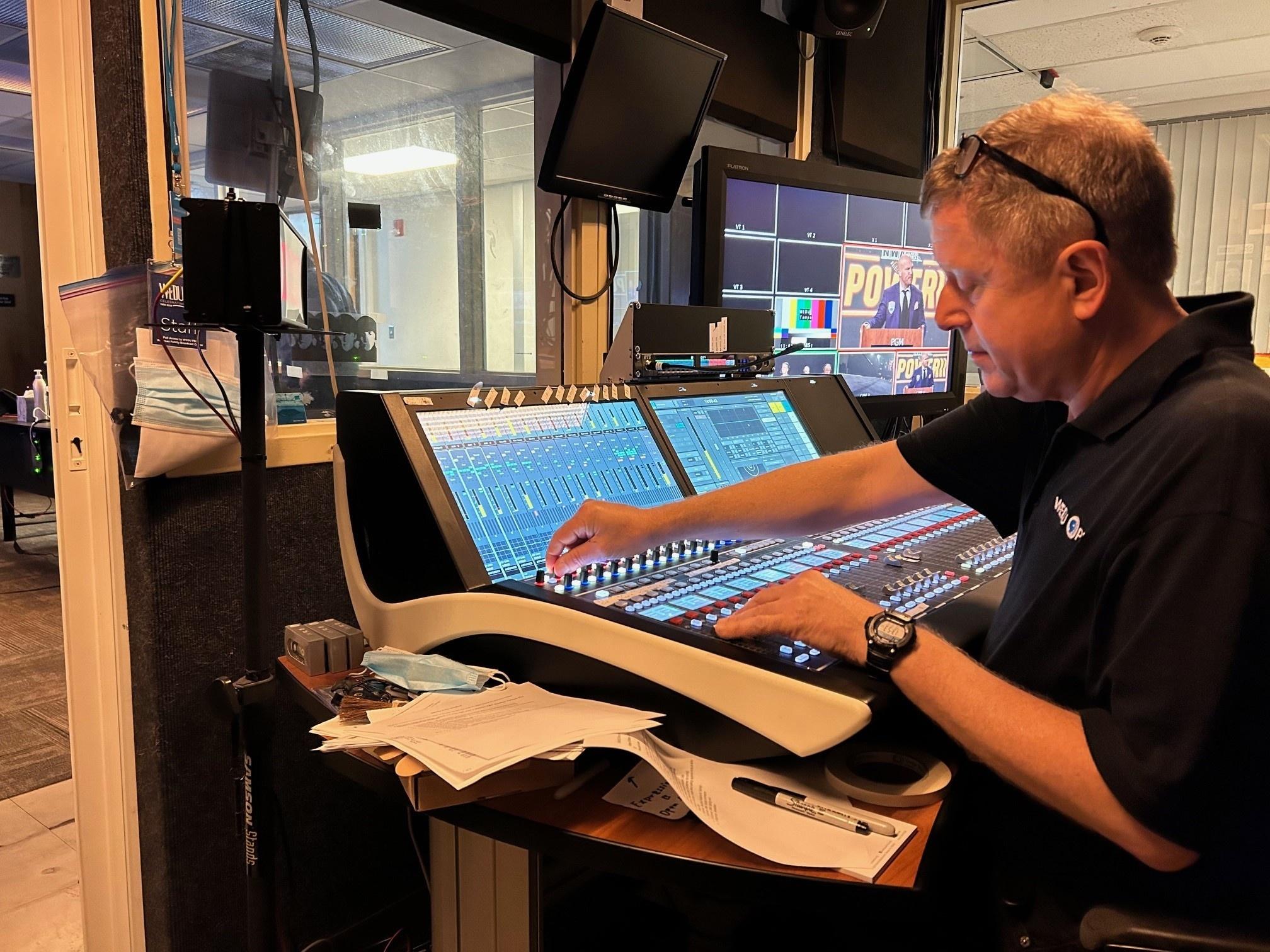CONTROL ROOMS
See where the Director leads the Production team in creating our studio productions. The control room is divided into two parts: Production Control Room (PCR) and Audio Control Room (ACR)
Production Control Room (PCR)
The PCR is the nerve center of our television station, where live or recorded broadcasts are orchestrated. It's a highly technical environment where various elements, such as cameras, audio sources, graphics, and video clips, are combined to create a seamless broadcast. Here's how a PCR typically works:
- Director: The Director is in charge of the overall production. They oversee the execution of the broadcast, giving instructions to the Production team, calling camera shots, cueing graphics, and video inserts, and ensuring that the program runs smoothly according to the script or rundown.
- Audio Engineer: The Audio Engineer is responsible for managing the sound for the broadcast. They mix and balance audio levels from various sources, including microphones, music, sound effects, and pre-recorded audio. The Audio Engineer may also apply effects, EQ adjustments, and dynamics processing to enhance the sound quality.
- Graphics Operator: The Graphics Operator controls the on-screen graphics during the broadcast. This includes lower thirds, titles, logos, and other visual elements. The Graphics Operator works closely with the director to cue graphics at the appropriate times and ensure they complement the presented content.
- Communications: Communication is essential in the Production Control Room to coordinate the activities of the Production team. The Director typically communicates with Camera Operators, Audio Engineers, Graphics Operators, and other crew members using intercom systems or headsets.
- Monitoring: Multiple monitors (which you can see through the window) display the various video feeds, audio levels, graphics, and other elements used in the broadcast. This allows the Production team to monitor the program in real-time and make adjustments to ensure quality and accuracy.
- Recording and Playback: The Production Control Room includes equipment for recording and playback of video content. This allows the station to record live broadcasts for later distribution or playback pre-recorded segments during live programming.
Overall, the PCR is a fast-paced and dynamic environment where skilled professionals work together to produce high-quality television programming. It requires teamwork, coordination, technical expertise, and the ability to adapt quickly to changing circumstances during live broadcasts.
Audio Control Room (ACR)
The Audio Operator controls mixing microphones and music during a studio production.
The ACR at WEDU PBS Studios manages all aspects of sound production during broadcasts. Here's how it typically operates:
- Audio Mixing Console: The centerpiece of the audio control room is the audio mixing console, also known as an audio mixer or soundboard. This console allows the Audio Engineer to control and adjust the levels of various audio sources, such as microphones, music, sound effects, and pre-recorded audio.
- Microphones: The ACR receives signals from multiple microphones, including those worn by on-air talent, positioned around the studio for capturing ambient sound and used for interviews or live audience interaction. The Audio Engineer adjusts the levels and applies processing to ensure clear and balanced sound.
- Audio Processing: The Audio Engineer may apply various processing techniques to enhance the quality of the audio signals. This can include equalization (EQ) adjustments to optimize the frequency response, dynamics processing (such as compression and limiting) to control volume levels, and effects like reverb or delay for creative enhancement.
- Monitoring: The ACR has monitoring systems that allow the Audio Engineer to listen to the audio mix in real-time. This includes studio monitors for listening to the final mix as it will be heard by viewers and headphones for monitoring individual audio sources or channels.
- Playback Devices: The ACR also contains equipment for playing back pre-recorded audio segments, such as music, sound effects, and prerecorded interviews. The Audio Engineer cues and controls the playback of these elements as required during the broadcast.
- Recording and Archiving: The ACR also has recording devices to capture the live audio mix for archival purposes or later distribution. This allows the station to maintain a record of past broadcasts and repurpose audio content as needed.
Overall, the ACR is critical in ensuring high-quality sound production for television broadcasts. The Audio Engineer must possess a keen ear, technical proficiency, and the ability to work efficiently under pressure to deliver professional audio results.



